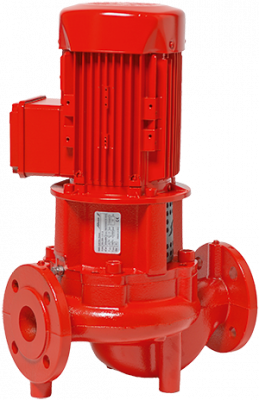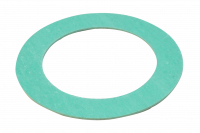Existing pump - Circulation

Replacement pump - Conventional Exchange sheet
Comment
Product information
Atmos GIGA-I 100/250-11/4

Design
Glanded pump in in-line design with flange connection.
Application
The pumping of heating water (in accordance with VDI 2035), chilled water and water-glycol mixtures without abrasive substances in heating, chilled water and cooling systems.
Technical data
- Permitted temperature range of the fluid: -20 °C to +140 °C
- Max. ambient temperature 40 °C
- Mains connection 3~400 V, 50 Hz (others on request)
- Protection class IP55
- Nominal diameter DN 32 to DN 250
- Standard version for operating pressure: 13 bar (up to +140 °C) / 16 bar (up to +120 °C)
- Pump housing and lantern: Standard: EN-GJL-250;
- Impeller: Standard: EN-GJL-200; special version: Bronze CuSn 10 stainless steel 1.4408
- Shaft: 1.4122
- Mechanical seal: AQEGG; other mechanical seals on request
Single-stage, low-pressure centrifugal pump in in-line design with:
- Mechanical seal
- Flange connection with pressure measuring connection R 1/8
- Lantern
- Coupling
- IEC standard motor
- Pump
- Installation and operating instructions

- Made of steel.
- Counter flanges (weld) are delivered complete (in pairs) with bolt, nut and flange gasket.

- Thickness: 2 mm.
- Inner diameter: 115 mm.
- Outer diameter: 152 mm.

The sensor measures the differential pressure between the suction ports and discharge ports to the pipes, and converts this into an electrical signal 4-20 mA, which is used by the frequency converter to regulate the pressure of the pump. The value of the output current is proportional to the differential pressure.

The sensor measures the differential pressure between the suction ports and discharge ports to the pipes, and converts this into an electrical signal 4-20 mA, which is used by the frequency converter to regulate the pressure of the pump. The value of the output current is proportional to the differential pressure.

The sensor measures the differential pressure between the suction ports and discharge ports to the pipes, and converts this into an electrical signal 4-20 mA, which is used by the frequency converter to regulate the pressure of the pump. The value of the output current is proportional to the differential pressure.

The sensor measures the differential pressure between the suction ports and discharge ports to the pipes, and converts this into an electrical signal 4-20 mA, which is used by the frequency converter to regulate the pressure of the pump. The value of the output current is proportional to the differential pressure.

The sensor measures the differential pressure between the suction ports and discharge ports to the pipes, and converts this into an electrical signal 4-20 mA, which is used by the frequency converter to regulate the pressure of the pump. The value of the output current is proportional to the differential pressure.









